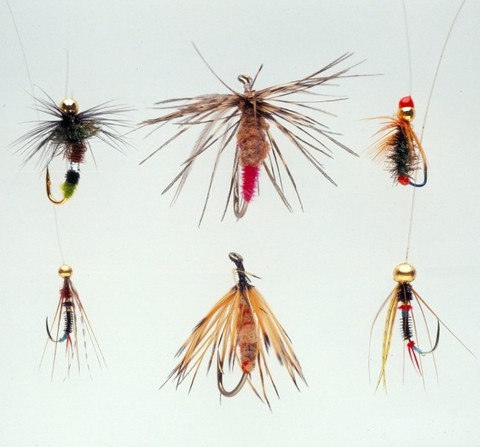
江戸時代末期に京都から技法が導入され、農家の副業として守り育てられて来ました。時代とともに製品の完成度を高めて、優れた釣りの成果を生むまでに技術が向上しました。
明治中頃には水産博等に出品して数々の賞を受賞し、以後、その品質は多くの釣り師の認めるところとなりました。今日では国内の毛鉤の大部分を生産する産地として、業界の先頭に立っています。

The techniques of this craft were introduced to Banshu from Kyoto toward the end of the Edo period (1600-1868). Local farmers began making the hooks and flies in their spare time, preserving and developing the craft over the years, while gradually perfecting each type of hook to a level at which it would bring good results. Flies won a number of prizes at Fisheries Fairs held during the late 1800s and as a result, Banshu fishing flies earned the recognition of many fishermen.
It is important when making a fly to consider the type of fish being pursued, the season, the weather, and the depth and chemistry of the water the fish inhabits. Consideration for these factors has led to the development of more than 1,000 different types of fly. Making one requires the utmost concentration but the result is a piece of grand illusion in the most alluring colors, perfectly mimicking an insect in the water. Today, Banshu leads the field as the main producer of the countries output of fishing flies, with 15 firms employing 48 staff, 6 of whom are government recognized Master Craftsmen.